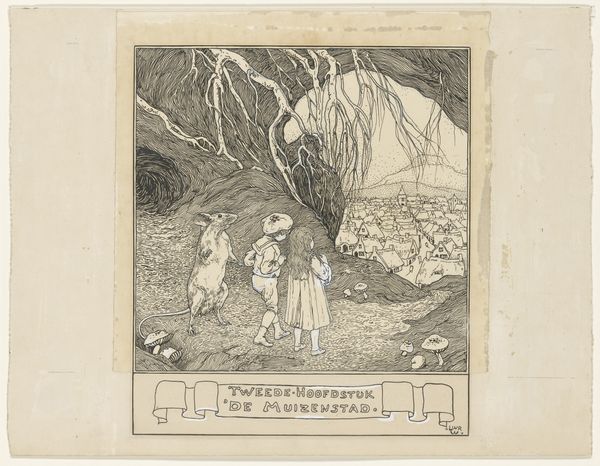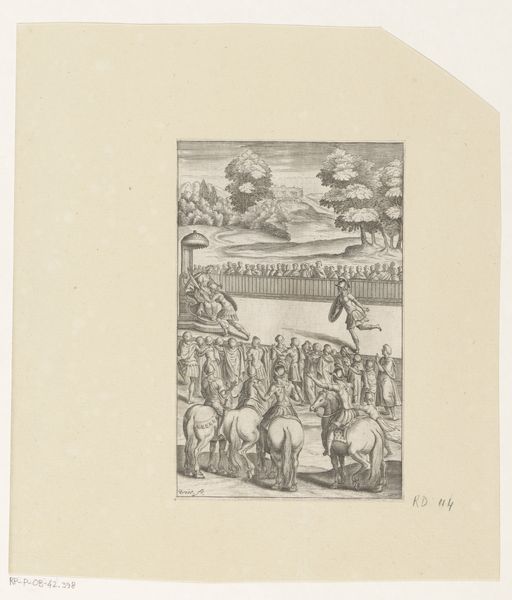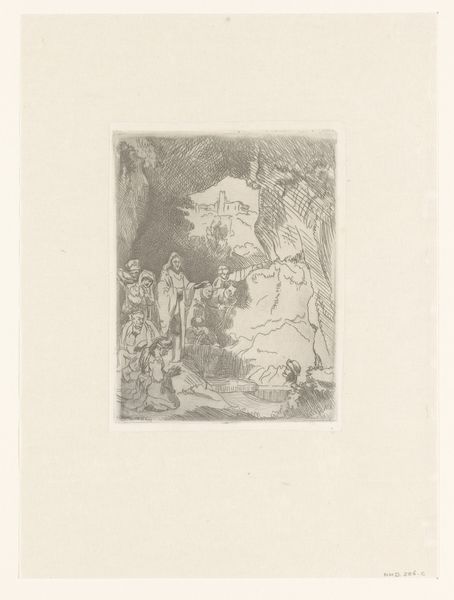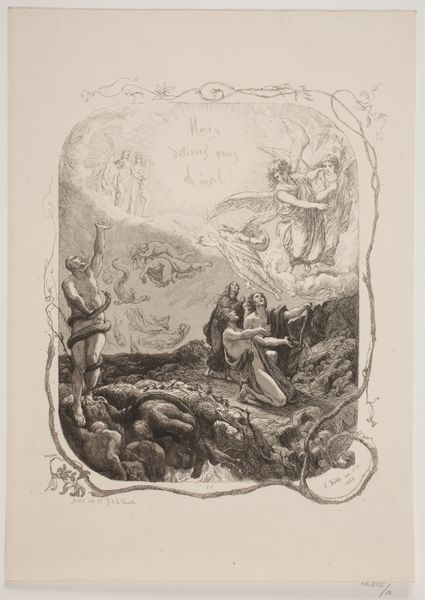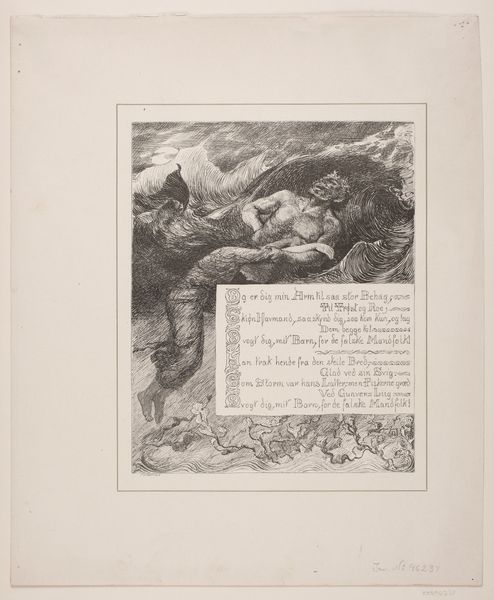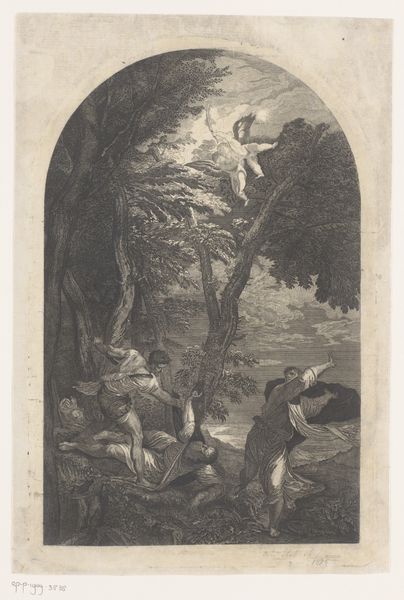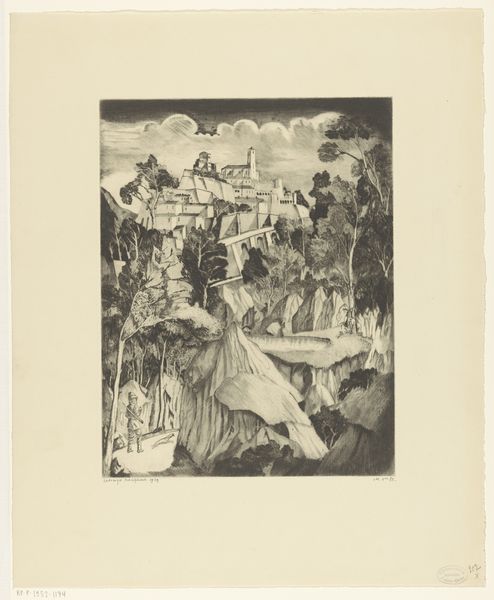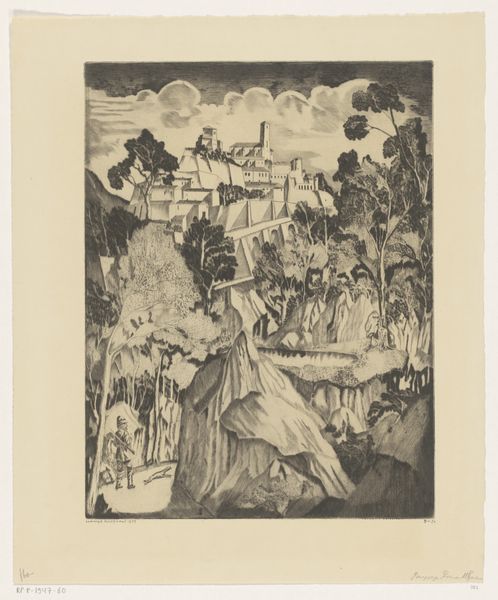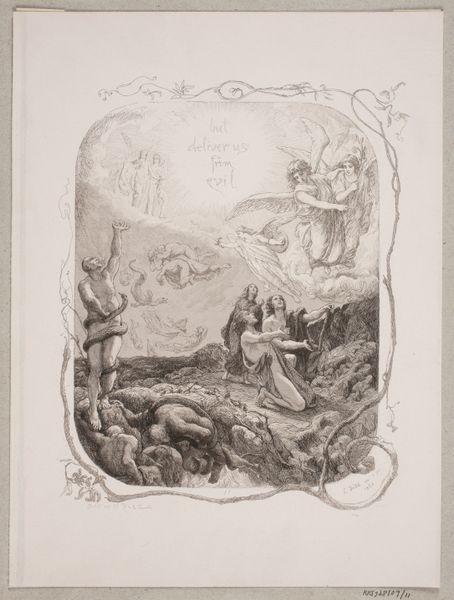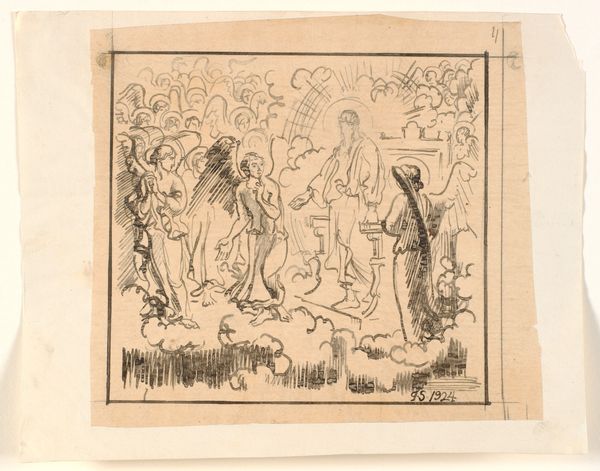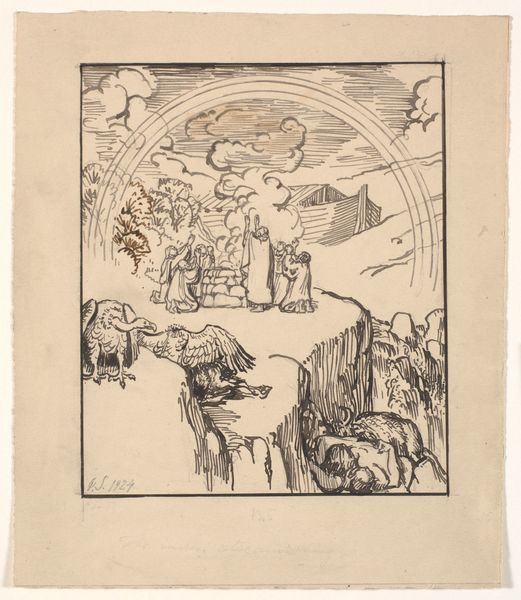
drawing, ink, pen
#
drawing
#
comic strip sketch
#
narrative-art
#
pen illustration
#
old engraving style
#
personal sketchbook
#
ink
#
ink drawing experimentation
#
folk-art
#
pen-ink sketch
#
line
#
pen work
#
sketchbook drawing
#
pen
#
storyboard and sketchbook work
#
sketchbook art
Dimensions: height 279 mm, width 240 mm
Copyright: Rijks Museum: Open Domain
Editor: Here we have Willem Wenckebach’s 1894 pen and ink drawing, “Muizen gaan op jacht,” or "Mice go Hunting," which is on display here at the Rijksmuseum. There's something delightfully absurd and slightly menacing about this regiment of mice. What sort of stories do you think it evokes? Curator: It's interesting that you say "menacing." The collective imagery is what gets my attention here. Mice, in many cultures, symbolize vulnerability, yet Wenckebach arms them, turning them into a force. Are they defending themselves or going on the offensive? Is it a folk tale being told, perhaps? The title certainly suggests a purpose-driven activity. Editor: Yes! And that tunnel they're emerging from…it’s so dark. What could that signify? Curator: Think of the cave as a symbol – a space of initiation, the unknown, or perhaps even the subconscious. Emerging en masse like this can symbolize suppressed desires, anxieties, or perhaps a cultural upheaval bubbling to the surface. And observe how the mushroom, often linked to folklore and hidden worlds, anchors the scene, literally rooting these "mice hunters" in this space. The presence of fairytale visual symbology invites analysis around Dutch cultural myths and collective memory, but from the perspective of something quite small in the environment. Editor: I see what you mean about this reading of anxiety, perhaps, rising to the surface of folk tales. Curator: Indeed. Are we observing a cultural dreamscape? How fascinating it is to see so much visual weight put upon, almost forced onto, a very humble animal. What do you take away from this detail? Editor: I hadn't really considered their "smallness" as meaningful before. Seeing it that way makes the image much more evocative for me! Thank you.
Comments
No comments
Be the first to comment and join the conversation on the ultimate creative platform.

